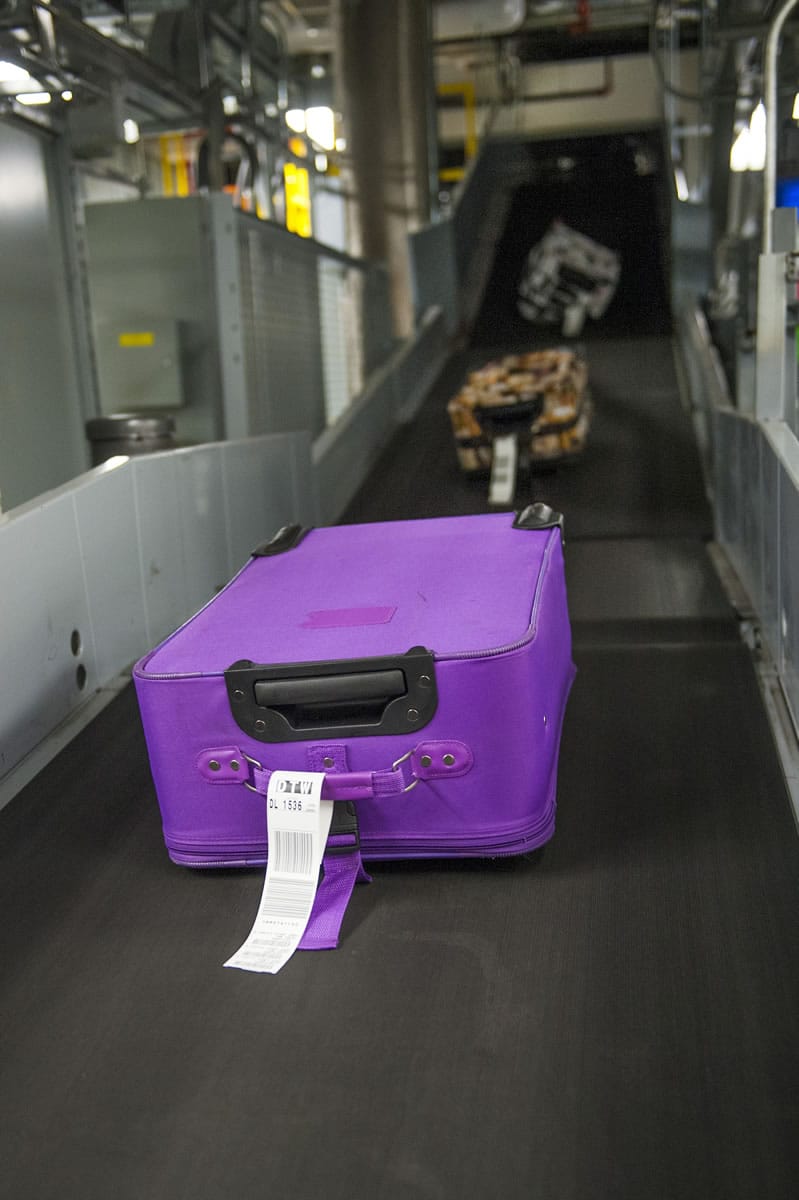Memo to the lady with the hot pink luggage tag: The six cans of Libby’s pumpkin pie filling that you carefully knotted in that plastic supermarket bag are not going to explode.
And to the Boise, Idaho-bound photographer with the double-locked “Golf Guard” case packed with tripods, you couldn’t have squeezed a bomb or much of anything else in there if you tried.
By now you both know that your bags seemed suspicious enough to be tested for explosives by inspectors for the Transportation Security Administration before you flew out of Baltimore-Washington International Marshall Airport recently.
The TSA leaves a calling card inside every bag it opens. Which isn’t many, given that about 14 million checked bags will pass through TSA hands nationwide during the extended Thanksgiving holiday weekend, when an estimated 24.6 million people plan to fly.
Fewer bags go missing — and even fewer get touched by the TSA — than was the case before bar-coded tags. And the slick new systems to keep terrorist explosives off airplanes have reduced the need for agents to open them for further scrutiny.
“The TSA isn’t even touching the vast majority of these bags,” the TSA’s spokeswoman, Lisa Farbstein, says.
Federal data shows that every month an average of 352 people question the TSA about real or perceived sins against their luggage.
In most large U.S. airports, here’s where luggage goes:
After trundling along the conveyor belt for a bit, it descends into the labyrinthine system of the TSA.
Sensors placed on the belt every few feet track the progress of a bag, setting off an alarm if a bag goes missing in the second or two that elapses between one sensor and the next.
The machinery has identified some bags that are too big for what comes next. Those it sends down another belt to a TSA inspector with a bomb-detecting wand. Still bigger boxes go down a different belt and are wrestled onto a steel table, where they are opened.
Most likely, however, your bag rumbles along toward a boxy beige device that looks a bit like the scanners you put your carry-on bag through, only about twice as big.
The bag passes through something in the machine — called an Examiner 3DX — that resembles the rotating collar in a medical MRI system. The machine does two things: decides whether there might be a bomb inside, and sends a three-dimensional image of any suspect bag to a nearby control room.
Exactly what makes the machine worry that a bag may have a bomb?
“It’s sniffing it, so to speak,” Farbstein says.
A bag that has been cleared heads on down the conveyor belt and back into the airline’s luggage system in the hope of getting on the same plane that you do. But when a bag emerges after drawing a red light or a white one — white is the machine basically saying “I dunno” — the bottom drops out of the belt and the bag moves to a lower conveyor.
Then the race is on.
Can the TSA inspector in the control room study the images of the bag flashing on the computer screen and in less than a minute make a definitive decision that it poses no risk?
If the answer is yes, the inspector pushes a button and your bag pops up to the conveyor taking all the green-lighted bags to the airline and your airplane. If the inspector sees something distressing or isn’t quite sure, your bag heads down the belt to the TSA inspection team.
A team member takes a look at the computer monitor to see what caught the control room inspector’s attention and then opens the bag.
The offending item is ferreted out. Everything is tested with a swab that detects explosives.
Repacked, locks and straps snapped into place, the bag goes back onto the conveyor that carries it to the airline system, where bags are loaded onto carts that will be towed to the airplane.
A bag that gets green-lighted will zip from counter, through the TSA system and to the airline luggage cart in about five minutes. Bags that are opened take longer. How much longer depends on whether you are a careful packer or one whose bags spill stuff when opened. Locks slow things down too, and nonapproved locks get sheared off with bolt cutters.



